Fascism
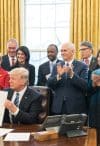
Since Trump’s election, mainstream commentary has generally avoided the question of fascism or neofascism, preferring instead to apply the vaguer, safer notion of “populism.” In today’s political context, however, it is crucial to understand not only how the failures of neoliberalism give rise to neofascist movements, but also to connect these to the structural crisis of concentrated, financialized, and globalized capitalism. | more…

What can a class analysis tell us about fascism’s national particularities and early forms? Why was there no mass movement for a separate fascist party in the United States? The lessons of several now-forgotten works of scholarship from the 1930s are critical to our understanding of American fascism—not only for what they tell us about its history, but also about how to fight it today. | more…

The Return of Neoliberalism in Argentina
Argentina has long been plagued by cycles of economic mismanagement, including multiple failed neoliberal experiments. Before his election as president, Mauricio Macri promised resumed growth, an export boom, lower inflation, a smaller budget deficit, and less poverty. Since then, has the new neoliberalism outperformed the old? | more…
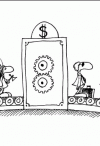
Not only a new administration, but a new ideology has now taken up residence at the White House: neofascism. It resembles in certain ways the classical fascism of Italy and Germany in the 1920s and ’30s, but with historically distinct features specific to the political economy and culture of the United States in the opening decades of the twenty-first century. | more…
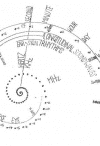
The Social Relations of Space Travel
As astronauts penetrate ever further into the cosmos, how are their bodies and subjectivities being transformed? While space travel remains governed by mechanisms of power and domination that tend to treat astronauts as tools, the practice of “space medicine” is now beginning to interact with astronauts’ bodies in a more multidirectional, dialectical fashion. | more…
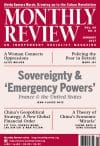
Shortly after the election of Donald Trump, the alt-right organization Turning Point USA introduced its notorious Professor Watchlist…, listing some 200 radical academics in the universities as dangerous professors. Stories regarding this list were soon being carried in major papers throughout the country. In contrast to David Horowitz’s list of “the 101 most dangerous academics in America” a decade ago, the current Professor Watchlist has behind it the new sense of power on the extreme right provided by Trump’s electoral victory.… There can be no doubt that this is part of an attempted new McCarthyism. In terms of its overall orientation, the alt-right strategy here resembles the Gleichschaltung (“bringing into line”) in 1933–35 in Hitler’s Germany, where intimidation was directed at all the major cultural institutions, including universities, with the object of getting them to align with the new dominant views. | more…
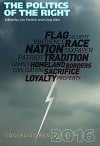
This fifty-second edition of the Socialist Register explores right-wing political forces and parties around the globe, bringing to bear the Register’s reputation for detailed scholarship and passionate engagement on some of the most troubling developments in world politics today. Contributors examine mobilizations of the right in a variety of countries by analyzing their social bases, their relationships with state institutions, and the reach of their influence on mainstream parties and opinion. This volume also addresses the historical transition from right-wing nationalism to ethnicism, the question of resurgent fascism, and how left parties should respond to challenges from the far right. | more…
Eric Lichtblau, The Nazis Next Door: How America Became A Safe Haven for Hitler’s Men (Boston: Houghton-Mifflin, 2014), 256 pages, $28.00, hardcover.
Fascism has come full circle…. The main sponsor of this regime this time is not Nazi Germany but Washington…. U.S. military adventures in the Middle East and Africa [and the] [r]esort to imperialist wars abroad also reflects growing social polarization at home, the hollowing out of U.S. liberal democracy as a result of the power of money, the gigantic expansion of the security and surveillance state, the spread of armed vigilantism, the intensification of racism, and the militarization of the U.S. police.… What we are likely witnessing is a situation in which it is no longer possible for the capitalist class in crisis to rule the people of the United States in the old way. A process is underway that involves the withering away of liberal democracy and the arrival of a not-so-friendly fascist order meant to bolster capitalism through a resort to authoritarian discipline. How far this process goes depends on political events and the effects of the ongoing economic crisis on public consciousness. | more…
It is not by chance that the very title of this contribution links the return of fascism on the political scene with the crisis of contemporary capitalism. Fascism is not synonymous with an authoritarian police regime that rejects the uncertainties of parliamentary electoral democracy. Fascism is a particular political response to the challenges with which the management of capitalist society may be confronted in specific circumstances. | more…






